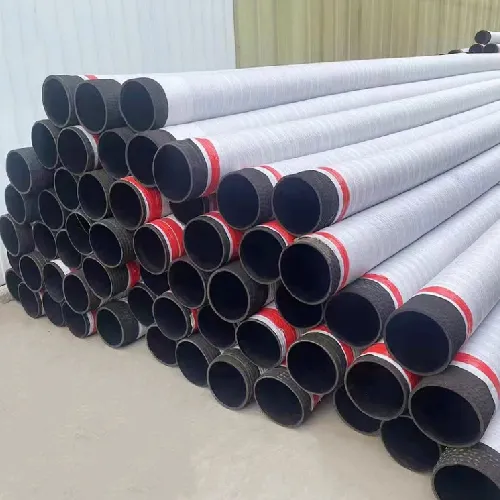
- Afrikaans
- Albanian
- Amharic
- Arabic
- Armenian
- Azerbaijani
- Basque
- Belarusian
- Bengali
- Bosnian
- Bulgarian
- Catalan
- Cebuano
- Corsican
- Croatian
- Czech
- Danish
- Dutch
- English
- Esperanto
- Estonian
- Finnish
- French
- Frisian
- Galician
- Georgian
- German
- Greek
- Gujarati
- haitian_creole
- hausa
- hawaiian
- Hebrew
- Hindi
- Miao
- Hungarian
- Icelandic
- igbo
- Indonesian
- irish
- Italian
- Japanese
- Javanese
- Kannada
- kazakh
- Khmer
- Rwandese
- Korean
- Kurdish
- Kyrgyz
- Lao
- Latin
- Latvian
- Lithuanian
- Luxembourgish
- Macedonian
- Malgashi
- Malay
- Malayalam
- Maltese
- Maori
- Marathi
- Mongolian
- Myanmar
- Nepali
- Norwegian
- Norwegian
- Occitan
- Pashto
- Persian
- Polish
- Portuguese
- Punjabi
- Romanian
- Russian
- Samoan
- scottish-gaelic
- Serbian
- Sesotho
- Shona
- Sindhi
- Sinhala
- Slovak
- Slovenian
- Somali
- Spanish
- Sundanese
- Swahili
- Swedish
- Tagalog
- Tajik
- Tamil
- Tatar
- Telugu
- Thai
- Turkish
- Turkmen
- Ukrainian
- Urdu
- Uighur
- Uzbek
- Vietnamese
- Welsh
- Bantu
- Yiddish
- Yoruba
- Zulu

Dec . 03, 2024 17:06 Back to list
Fuel Line Hose Options for Outboard Motors and Their Key Features
Fuel Line Hose for Outboard Motor A Vital Component for Marine Performance
When it comes to the efficient operation of any outboard motor, attention to the fuel system is paramount. Among its various components, the fuel line hose stands out as a critical element that not only ensures fuel flows smoothly from the tank to the engine but also plays a vital role in the overall performance and safety of the marine vehicle. Understanding the importance of the fuel line hose, its types, and maintenance can significantly enhance your boating experience.
Importance of Fuel Line Hoses
Fuel line hoses are designed to transport fuel under pressure from the fuel tank to the outboard motor. These hoses endure various conditions, including exposure to harsh marine environments, fluctuating temperatures, and the corrosive nature of fuels. A well-functioning fuel line hose contributes to the engine’s efficiency, as any blockages or leaks can lead to improper fuel delivery, strained engine performance, and potentially dangerous situations.
Moreover, the reliability of fuel line hoses directly impacts the safety of the vessel. Leaks can result in fuel spills, presenting significant fire hazards. Therefore, it is crucial to use high-quality hoses that meet specific industry standards to guarantee durability and performance.
Types of Fuel Line Hoses
Fuel line hoses for outboard motors come in different types, each designed for specific applications and fuel types. Common materials include rubber, polyurethane, and composite materials, all engineered to resist the effects of fuel and environmental conditions.
1. Rubber Fuel Hoses Traditionally used in many outboard motors, rubber hoses are flexible and easy to install. They can withstand various temperatures and pressures but may degrade over time, especially when exposed to fuels with ethanol content. Regular inspections are essential to determine the condition of rubber hoses.
2. Polyurethane Hoses Known for their superior resistance to fuel permeation and UV radiation, polyurethane hoses are an excellent choice for modern outboard motors. They typically have a longer lifespan than rubber hoses and maintain their integrity under harsh conditions.
3. Composite Fuel Hoses Incorporating multiple materials, composite hoses offer enhanced durability and flexibility. They are designed to handle high pressures and resist punctures, making them ideal for demanding marine applications.
fuel line hose for outboard motor

Maintenance Tips for Fuel Line Hoses
To ensure the longevity and reliability of your outboard motor's fuel line hose, regular maintenance and inspections are crucial
- Inspect Regularly Check hoses for signs of wear, cracks, or leaks. Early detection of damage can prevent more severe issues later on.
- Replace When Necessary Most manufacturers recommend replacing fuel line hoses every few years or if any deterioration is observed. Following the manufacturer's guidelines on replacement can help maintain optimal performance.
- Proper Installation Ensure that hoses are correctly installed without sharp bends or kinks, which can restrict fuel flow and create pressure points.
- Use the Right Hoses Always use hoses that are compatible with your specific fuel type and meet industry standards. Using incorrect hoses can lead to leaks, inefficiencies, and safety concerns.
- Monitor Fuel Quality Contaminated fuel can accelerate hose degradation. Regularly check the quality of fuel and ensure that it is free from moisture and debris.
Conclusion
The fuel line hose is an essential component that guarantees the smooth operation of outboard motors. By understanding the importance of this component, recognizing the various types available, and adhering to maintenance recommendations, boat owners can enhance the performance, safety, and longevity of their vessels. Investing time in proper care of the fuel line hose ensures that your boating adventures remain enjoyable and worry-free, allowing you to focus on the beauty of the open water rather than mechanical failures.
Latest News
Steel Wire Reinforced Hydraulic Hose SAE 100 R1 / EN853 1SN S
NewsOct.17,2024
Two Layers Steel Wire Reinforced Hydraulic Hose SAE 100 R2 / EN853 2SN
NewsSep.03,2024
Textile Braid Reinforced Hydraulic Hose SAE100 R3+R6
NewsSep.03,2024
Textile Reinforced Hydraulic oil Suction Hose with embedded Steel Wire SAE 100 R4
NewsSep.03,2024
Single Wire Braid and Textile Covered Hydraulic Hose SAE 100 R5
NewsSep.03,2024
High Pressure Thermoplastic Hydraulic Hose SAE 100 R7 / EN855 R7 - SAE 100 R8 / EN855 R8
NewsSep.03,2024
Heavy Duty Four-layer Steel Wire Spiral Reinforced Hydraulic Hose SAE100R9+R10+R12
NewsSep.03,2024
Heavy Duty Multi-layer Steel Wire Reinforced Hydraulic Hose SAE100R13 SAE100R15
NewsSep.03,2024
Latest Products










